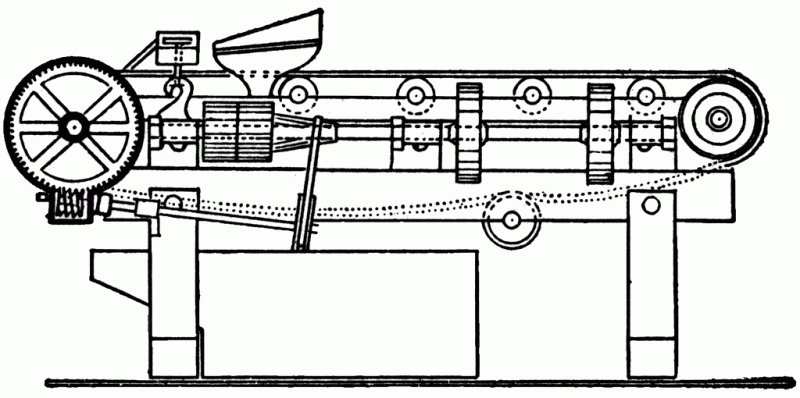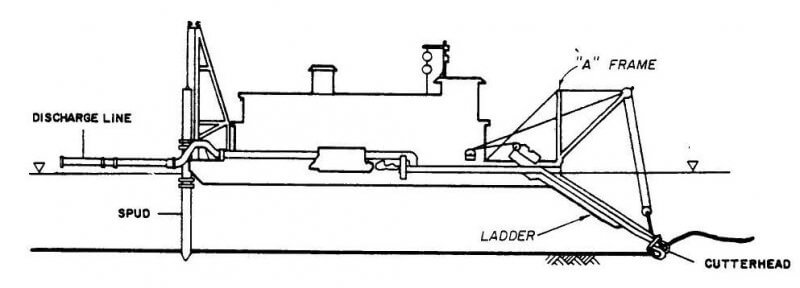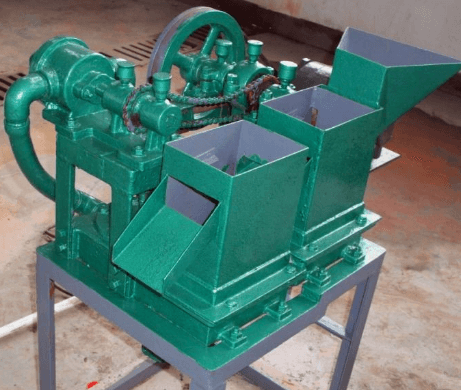Tin Mining and Recovery by Sluicing
In this paper an attempt is made to describe the sluicing operations on the tin fields of north-eastern Tasmania. No claim is made to completeness, for much of the ground has already been covered, and nothing is to be gained by needless repetition. On this account some portions of the subject have obviously received but […]
Vanning Shovel & Frue Vanner

Some time ago, we had to decide the question whether it would pay to re-treat slime-tailings, and several machines were tested in order to ascertain the type of construction which would give the greatest saving. In previous tests on the ore of this company, several tables proved far inferior to Vanning and for this reason they […]
Gold Dredge Components & Parts
The design and specifications submitted in this paper are not offered as satisfying all conditions of gold dredging. Many rich stream-beds would not give “ elbow-room ” for such a dredge: many otherwise favorable gold-bearing areas are too small to warrant the cost of its installation; and, in some localities, as I have already remarked, […]
Hydraulic Gold Dredging

Repeated failures in attempts to work gold-bearing gravels by means of suction dredges have created the impression that this method is impracticable. The suction hydraulic gold dredges have failed from three special causes: excessive wear and frequent breakage of pump-shell, runners and liners; inability to dredge compact gravel which would not readily move towards the intake; […]
Ruble Hydraulic Elevator Ribble Laddler
In many of the old placer-mining districts are still to be found large tracts of gold-bearing gravel not suitable to be worked with a dredge, because the bed is too shallow or the gulch too narrow. Frequently there is not enough grade to handle the gravel successfully by ground-sluicing or a bed-rock flume, or it […]
Amalgamation Pan
The aim of instruction in a metallurgical laboratory is to make real the principles on which metallurgical processes and operations are based, and to foster the spirit of investigation. The materials with which experiments are carried out are ores, metals, and metallic compounds. The method varies with the end sought. A class may work as […]
Jigging Minerals: Galena – Sphalerite

Summarizing some of the principal points brought out in this laboratory Jigging of Minerals’ investigation, I believe the following may safely be accepted: The pulsion-reaction is by far the most important one in the process of jigging. During this period, with sized grains of different specific gravities, with proper pulsion-velocity, the separation between them will […]
Jigging

The jig, in one form or another, continues to hold a leading place among the machines designed to separate two or more minerals of different specific gravities. It is simple in construction, easily operated, capable of treating large quantities in a short time, and highly efficient under various conditions. The question, whether the material to […]
Hydraulic Jig Concentrator VS Shaking Table
Concentration of grains from 10 to 30 mm. is effected by hydraulic jigs with two compartments, and in the case of the smaller grains down to 2 mm. by jigs with five compartments. The construction of the jigs is the same in both cases. Fig. 3 gives the details of a jig with two compartments; it […]
Tin Ore Processing
The methods employed in dressing the tin ore up to the required percentage of purity depend mainly on the type of ore crushed. These may be briefly divided into two distinct classes—viz., a free milling ore and a complex milling ore. In the former the ore is practically free from the common metallic sulphides, such […]
